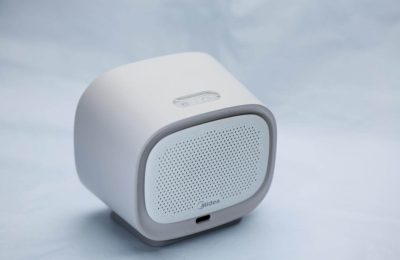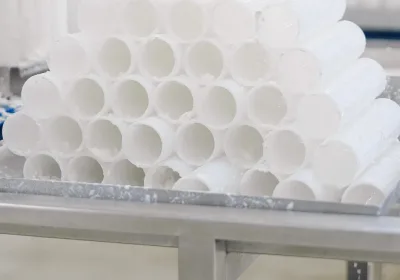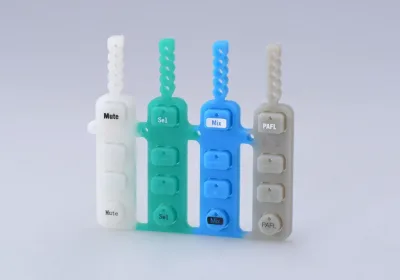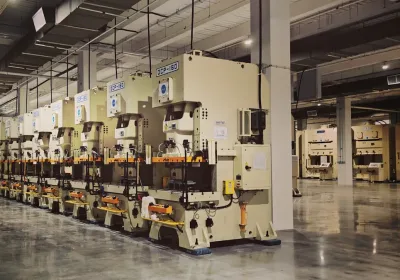
Silicone moulds have revolutionised baking and crafting due to their ease of use. Their non-stick surfaces make them ideal for intricate designs. Perfect for cakes, chocolates, resin, and soap projects, these moulds are increasingly sought after as more people embrace custom and eco-friendly tools. With the growing popularity of home cooking and crafting, silicone moulds enable creative designs while being both practical and visually appealing.
Key Takeaways
Silicone moulds are useful for baking and crafting. They have non-stick surfaces, so items come out easily without breaking.
Use food-safe silicone moulds for baking to stay safe. Check for FDA-approved labels to make sure they are good to use.
Take care of silicone moulds by cleaning them after use. Keep them dry to help them last longer.
Understanding Silicone Moulds
Composition and Key Properties
Silicone moulds are made from strong and bendy silicone. This material is known for lasting a long time. It is created using polymerised siloxanes, which are chains of silicon and oxygen atoms. This special structure makes silicone heatproof and non-stick. Unlike other materials, silicone does not have carbon in its base, making it a stable inorganic polymer.
Sometimes, fillers like silica are added to make silicone moulds stronger. They can handle very hot or cold temperatures, so they work well for baking and crafting. For example, you can use them to make resin art, soap, or fancy cake designs. They are light, reusable, and easy to store, which makes them eco-friendly.
Property/Composition | Description |
|---|---|
Chemical Structure | Made from polymerised siloxanes with silicon and oxygen chains. |
Unique Characteristics | No carbon in their base, making them stable inorganic polymers. |
Common Compound | Poly-dimethylsiloxane, made from silicon and methyl chloride. |
Applications | Used in flexible moulds, seals, and medical implants due to stability. |
Benefits of Silicone for Baking and Crafting
Silicone moulds have many benefits for baking and crafting. Their non-stick surface helps you remove items easily, like cupcakes or resin jewellery. They can handle temperatures from -40°C to 230°C, making them useful for many tasks.
They are also very strong. Unlike metal moulds, silicone ones do not crack, bend, or rust. You can clean them in the dishwasher, which saves time. For crafters, silicone moulds are great for detailed designs that hard materials cannot make. They are perfect for soap, candles, or clay art.
Common Myths About Silicone Moulds
There are many wrong ideas about silicone moulds. Some think they are only good for simple baking, like waffles. But silicone moulds can be used for chocolates, resin art, and more. Others believe they are weaker than metal moulds, but silicone is less likely to crack or bend.
Some people think cleaning silicone moulds is hard. Actually, their non-stick surface and dishwasher-safe feature make cleaning easy. Others worry they cannot handle heat, but silicone is heatproof and works well for baking and crafting.
Tip: Always check if your silicone moulds are food-safe before using them for baking.
Silicone Moulds for Baking
Types of Baking Moulds (Cakes, Cupcakes, Chocolates)
Silicone moulds come in many shapes and sizes. They are great for baking fans. You can use them for cakes, cupcakes, or chocolates. Cake moulds have smooth surfaces and deep spaces. This helps bake even layers. Cupcake moulds are smaller and come in sets. They are perfect for baking many at once. Chocolate moulds have detailed designs. They help you make fancy treats easily. Silicone is flexible, so your baked goods pop out without breaking.
Advantages and Disadvantages of Baking-Specific Silicone Moulds
Silicone moulds have many good points for baking. Their non-stick surface means no greasing is needed. This saves time and effort. They are dishwasher-safe, so cleaning is simple. Unlike metal pans, silicone does not rust or bend. They are also easy to store because they are flexible. But there are some downsides. Metal pans heat more evenly, which can bake better. Silicone moulds might lose flexibility if they are low quality. While they are cheap, buying strong ones is important to avoid replacing them often.
Tip: Always buy food-safe silicone moulds to ensure safety and long use.
Performance and Heat Conductivity in Baking
Silicone moulds work well in hot and cold temperatures. They can handle -40°C to 230°C. They do not conduct heat as well as metal pans. But they still spread heat evenly for most recipes. Silicone’s heat conductivity is about 6-12 W/mK. This helps bake cakes, cupcakes, and chocolates properly. The non-stick surface ensures nothing sticks to the mould. Silicone keeps its shape and stays flexible after many uses. This makes it a dependable choice for baking and crafting.
Silicone Moulds for Crafting

Types of Crafting Moulds (Resin, Polymer Clay, Soap)
Silicone moulds are handy tools for crafting projects. They can be used with materials like resin, polymer clay, and soap. Resin moulds are great for making jewellery, coasters, or art pieces. Polymer clay moulds help create detailed shapes for ornaments or figurines. Soap moulds let you make unique bars with fancy patterns.
These moulds also work with cement, plaster, wax, and paper mâché. Their bendy nature makes them perfect for statues, candles, and prototypes. Whether you craft for fun or work, silicone moulds give endless creative options.
Pros and Cons of Crafting-Specific Silicone Moulds
Silicone moulds for crafting have many advantages. Their flexibility helps you remove items without breaking them. They last long and can handle repeated use under pressure or heat. Beginners like them because they are simple to use and affordable.
But there are some downsides too. If liquid silicone is not mixed well, the mould may be weak. You might need release agents to remove items smoothly. Cheap moulds can lose shape over time, so buying good-quality ones is important for lasting use.
Tip: Pick silicone moulds made for your crafting material for better results.
Durability and Flexibility in Crafting Applications
Silicone moulds are strong and flexible. They stay useful even after many uses, making them reliable. They can handle high heat, so they work well for tough projects. These moulds are built to resist pressure and heat, making them ideal for demanding tasks.
Taking care of them helps them last longer. Clean them well and store them in a cool, dry spot. With proper care, silicone moulds will stay useful for both crafting and baking needs.
Comparing Baking and Crafting Silicone Moulds
Material and Design Differences
Silicone moulds are useful for many tasks. Their material and design depend on their purpose. Baking silicone moulds use food-safe silicone. This material is soft, safe, and handles high heat. It works well in ovens and helps remove baked goods easily. Crafting silicone moulds are made for cooler tasks like resin or soap. These moulds focus on detailed designs and strength, not heat resistance.
How they are made also shows differences. Baking moulds follow strict food safety rules. This ensures no harmful chemicals touch your food. Crafting moulds may have extra features like strong edges or patterns. These help with detailed designs. Silicone is better than plastic for flexibility and ease of use. But plastic moulds are still good for some crafting jobs because they are firm and work well with cool materials.
Safety and Food-Grade Considerations
Safety is very important when picking silicone moulds. Food-safe silicone is made for items you eat. It is safe, non-toxic, and does not cause allergies. It has no harmful fillers, so it keeps food clean. Food-safe silicone meets strict rules and works well in freezers, ovens, and dishwashers.
Crafting moulds do not always need to be food-safe. They are not used for food. If you want one mould for both baking and crafting, choose food-safe silicone. Using non-food-safe moulds for baking can make food unsafe. For crafting, focus on moulds that are strong and work with materials like resin or soap. Always check the label to make sure the mould fits your needs.
Note: Food-safe silicone is a must for baking. Look for FDA-approved labels to stay safe.
Performance and Longevity in Different Uses
Silicone moulds work differently based on their use. Baking moulds handle heat well. They stay flexible and keep their shape even after many uses. Their non-stick surface makes removing baked goods easy. You do not need extra release sprays. But they do not heat as evenly as metal pans, which can change baking times.
Crafting moulds are made to last and create detailed designs. They can handle pressure from materials like resin or soap. This ensures fine details without breaking. Crafting moulds do not need to resist heat but must stay strong and flexible. Cleaning and storing them properly helps them last longer. Using good-quality silicone putty can make custom moulds stronger too.
Tip: Use release sprays for crafting to remove items easily and protect your mould.
Practical Tips for Using Silicone Moulds
Cleaning and Maintenance Guidelines
Cleaning silicone moulds properly keeps them in good shape. Wash them after every use with warm, soapy water. This stops residue from building up and ruining your projects. For tough stains, use a soft sponge or brush. Avoid anything rough that could scratch the surface. If your moulds are dishwasher-safe, cleaning becomes even easier and quicker.
Check your moulds often for damage like small cracks or tears. Fixing these early helps them last longer. If you use silicone putty for custom designs, clean it well after each use. This keeps it flexible and strong for future projects.
Tip: Do not use sharp tools or harsh cleaners. These can scratch the mould and ruin its non-stick surface.
Storage Tips for Longevity
Storing silicone moulds the right way makes them last longer. Always dry them completely before putting them away. This stops mould or mildew from growing. Do not stack them for too long, as this can change their shape. If stacking is needed, place soft cloths or paper towels between each mould.
Keep moulds out of direct sunlight. Too much sun can fade them and change their texture. Store them in a cool, dry place to keep them flexible and looking new.
Note: Storing moulds properly keeps them safe and ready for food use.
Cost-Effectiveness and Budget Considerations
Silicone moulds are a smart choice for saving money. They last a long time and can be reused many times. Good-quality food-grade silicone moulds cost more at first but work better and last longer. Spending more on quality moulds means fewer replacements, saving money over time.
Think about what you need before buying moulds. For crafting, pick ones made for materials like resin or soap. For baking, choose food-grade silicone moulds. These are safe, easy to clean, and perfect for your projects.
Tip: Check for certifications like FDA approval to make sure the moulds are safe to use.
Choosing the Right Silicone Mould
Knowing What You Need
Picking the right silicone mould starts with knowing your needs. Do you want to bake cakes, make chocolates, or craft resin art? Baking needs food-grade silicone moulds. These can handle high heat and are safe for ovens. For crafting, flexibility and strength matter more. This is important for materials like resin or soap.
Think about the size and shape you need. Big cake moulds are great for layered desserts. Smaller ones are better for cupcakes or chocolates. For crafting, detailed designs are key. If you like custom projects, use silicone mould putty for unique shapes. Always choose a mould that fits your project for the best results.
Tip: If you want one mould for baking and crafting, pick food-grade silicone to keep food safe.
Checking Quality and Certifications
Good silicone moulds last longer and work better. Look for certifications to ensure safety and quality. These show the mould meets standards for kitchen or crafting use.
Certification Standard | What It Means |
|---|---|
ISO 9001 | Ensures good quality and happy customers. |
ISO 10993 | Checks if it’s safe for medical use. |
ISO 13485 | Focuses on medical device quality. |
FDA Regulations | Confirms safety for food and medical items. |
CE Marking | Meets EU health and safety rules. |
These certifications prove the mould is safe, strong, and reliable. Food-grade silicone moulds should meet FDA rules or similar standards. For crafting, check for ISO standards that focus on durability and flexibility.
Note: Certified moulds are safer and encourage better silicone products.
Tips for Buying Online or In-Store
Buying silicone moulds can feel tricky with so many choices. Online shops often have more options than local stores. You can find unique shapes and sizes online. But always read reviews and ratings to check quality. Look for details about food-grade silicone or crafting material compatibility.
In stores, you can touch and check the mould. Test its flexibility, thickness, and build. A good mould should feel strong but bendy. Avoid thin or weak moulds as they won’t last long.
Tip: Whether buying online or in-store, focus on quality. Strong silicone moulds save money by lasting longer.
Knowing the difference between baking and crafting silicone moulds helps. Baking moulds are safe for food and resist high heat. Crafting moulds are strong and made for detailed designs.
Feature | Baking Silicone Moulds | Crafting Silicone Moulds |
|---|---|---|
Heat Resistance | Works well in hot ovens | Best for cool materials like resin |
Food Safety | Uses silicone safe for food | May not be food-safe |
Design Purpose | Simple shapes for cakes and treats | Fancy patterns for resin and soap |
Picking good-quality moulds is very important. Look at how strong, heatproof, and durable they are.
Changing how you use moulds, like adjusting heat, can improve their performance.
Choose moulds based on what you need. Baking needs food-safe moulds. Crafting needs flexible and tough ones. Spending more on good moulds gives better results and lasts longer.
FAQ
Why are silicone moulds better than metal ones?
Silicone moulds are light and easy to clean. They bend easily, so items come out without breaking. You can use them for both baking and crafting.
Can one silicone mould work for baking and crafting?
Yes, but only if it is food-safe. Food-grade silicone keeps food safe when switching between baking and crafting.
What is the best way to clean silicone moulds?
Wash them with warm, soapy water after use. If they are dishwasher-safe, you can clean them in the dishwasher for convenience.

Start your project with LKprototype
LKprototype company simplifies procurement for custom manufacturing, Suitable for making your products or prototypes with a variety of materials, such as metal or plastic, silicone rubber, from 3D Printing to CNC Machined Parts and Vacuum Casting , with a focus on speed and efficiency. Our platform provides instant quotes. With LKprototype, You can connect with the team to communicate your project to ensure quality and on-time delivery.
Start with an instant quote and experience how our technology and expertise can make custom part procurement faster and easier.
 LKprototype
LKprototype





